[Tested] Joystick Cockpit
Perhaps you have yet to hear of Joystick Components, but if you’re a fan of Loic Bruni, or Finn Iles, chances are you’ve seen them accomplishing feats such as winning World Champs aboard a Joystick cockpit. Curiosity about the product led us to get our hands on a full cockpit for Winter testing. Read on for out thoughts on the Analog bar, Binary stem, & Imprint grips from Joystick Components.
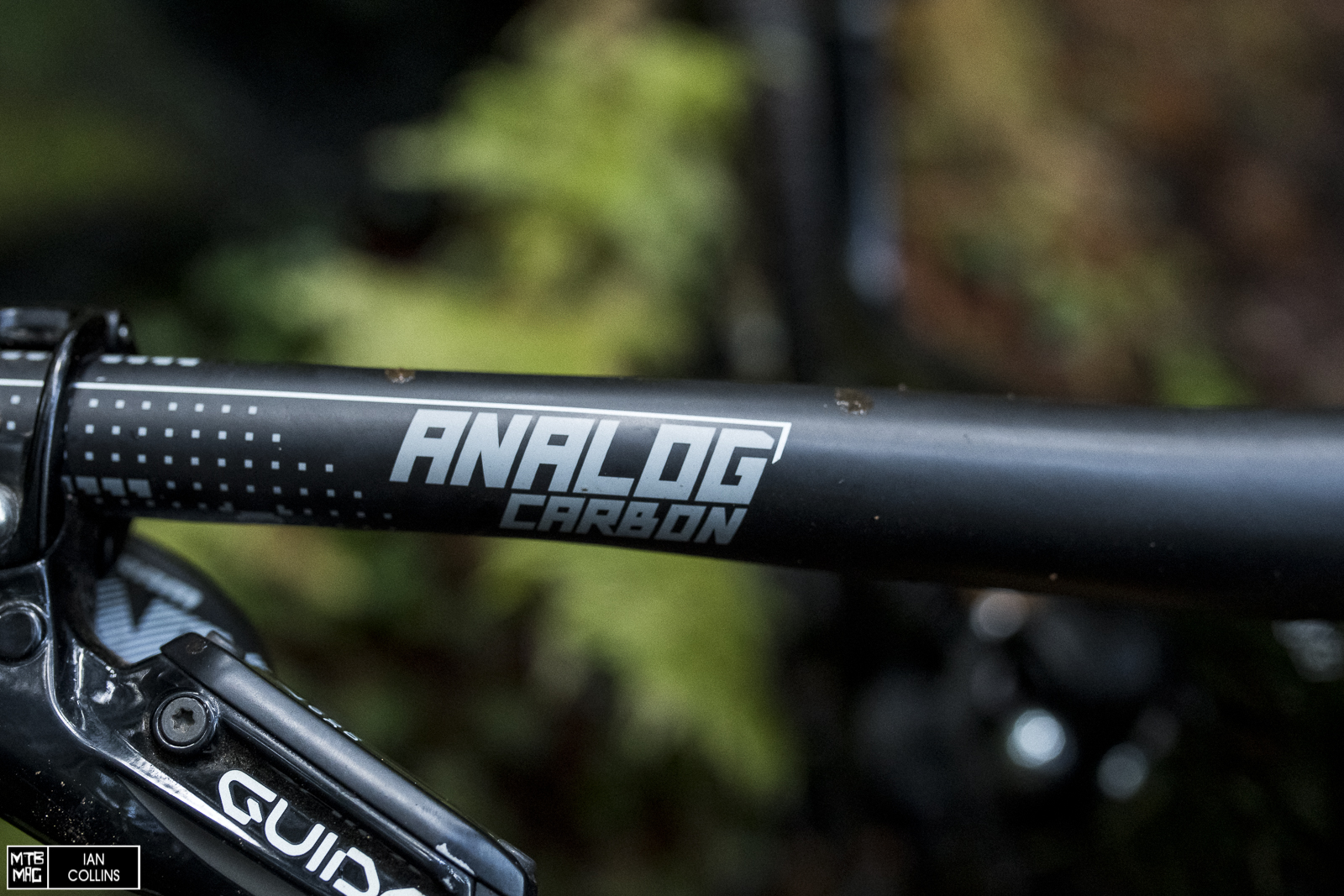
Specs – Analog Bar
- 31.8 (Tested) & 35mm clamp sizes
- Width – 800mm
- Rise – 20mm (tested), 30mm
- Bend – 9th
- Upsweep – ° 6
- Weight – 223 g – 20mm, 212 g – 30mm
- Full Carbon
- $ 165 USD, £ 129.99

The bars use Joystick’s signature ‘Analog Carbon’ meaning they’re based off a mold and design unique to Joystick, that’s designed to enhance ride control and dampen vibration from trail feedback.
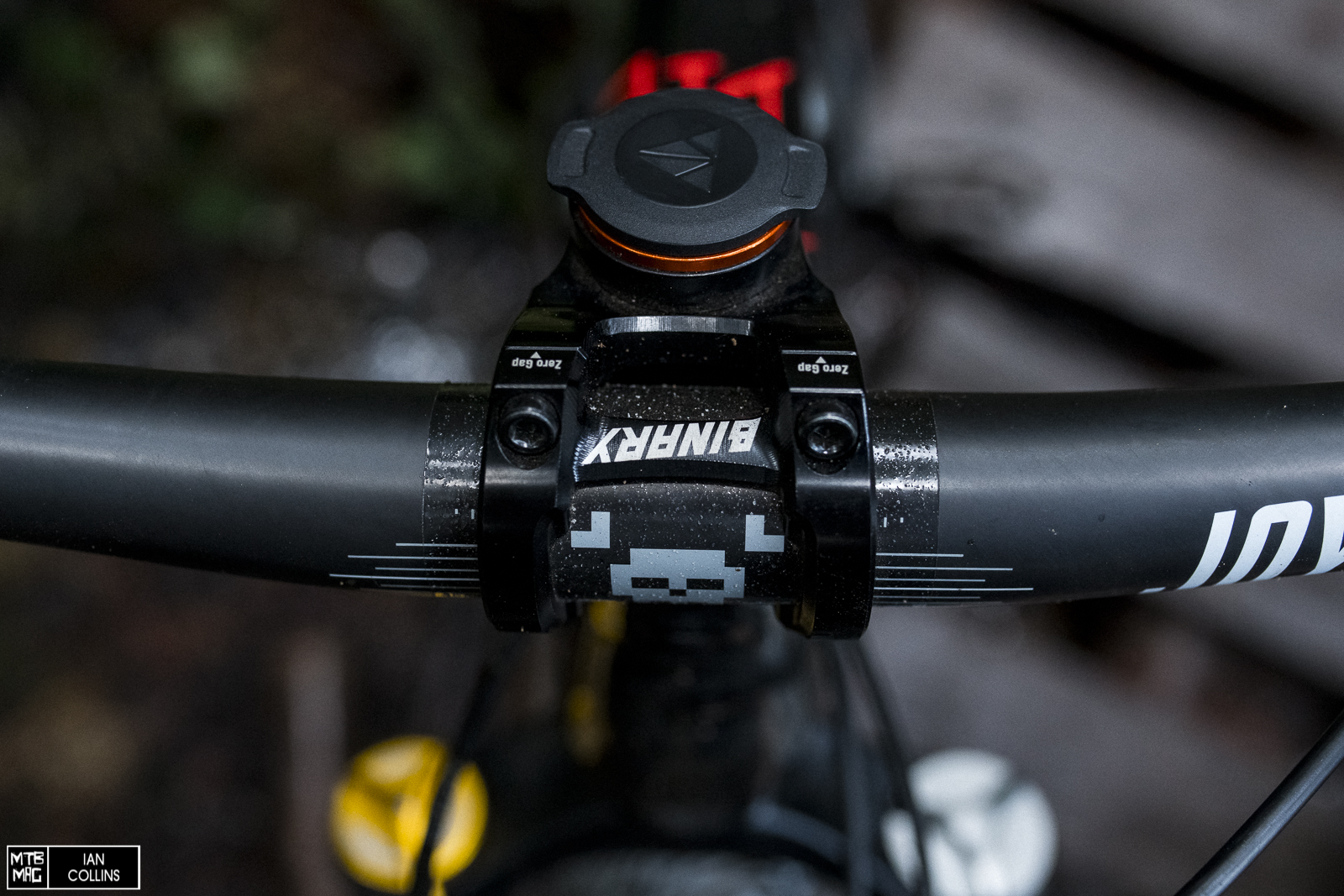
Clean and distinct lines on the handlebars help massively with stem alignment, both horizontally and vertically.
 A clean but unique aesthetic seems to be Joystick’s MO as all their products are in black color-ways, something we’re a huge fan of.
A clean but unique aesthetic seems to be Joystick’s MO as all their products are in black color-ways, something we’re a huge fan of.

Specs – Binary Stem
- 31.8 (Tested) & 35mm clamp sizes
- 35 (Tested) & 50mm lengths
- Weight – 125 g (35mm)
- 0 ° laughed
- 40mm Stack Height
- $ 119 USD, £ 89.99
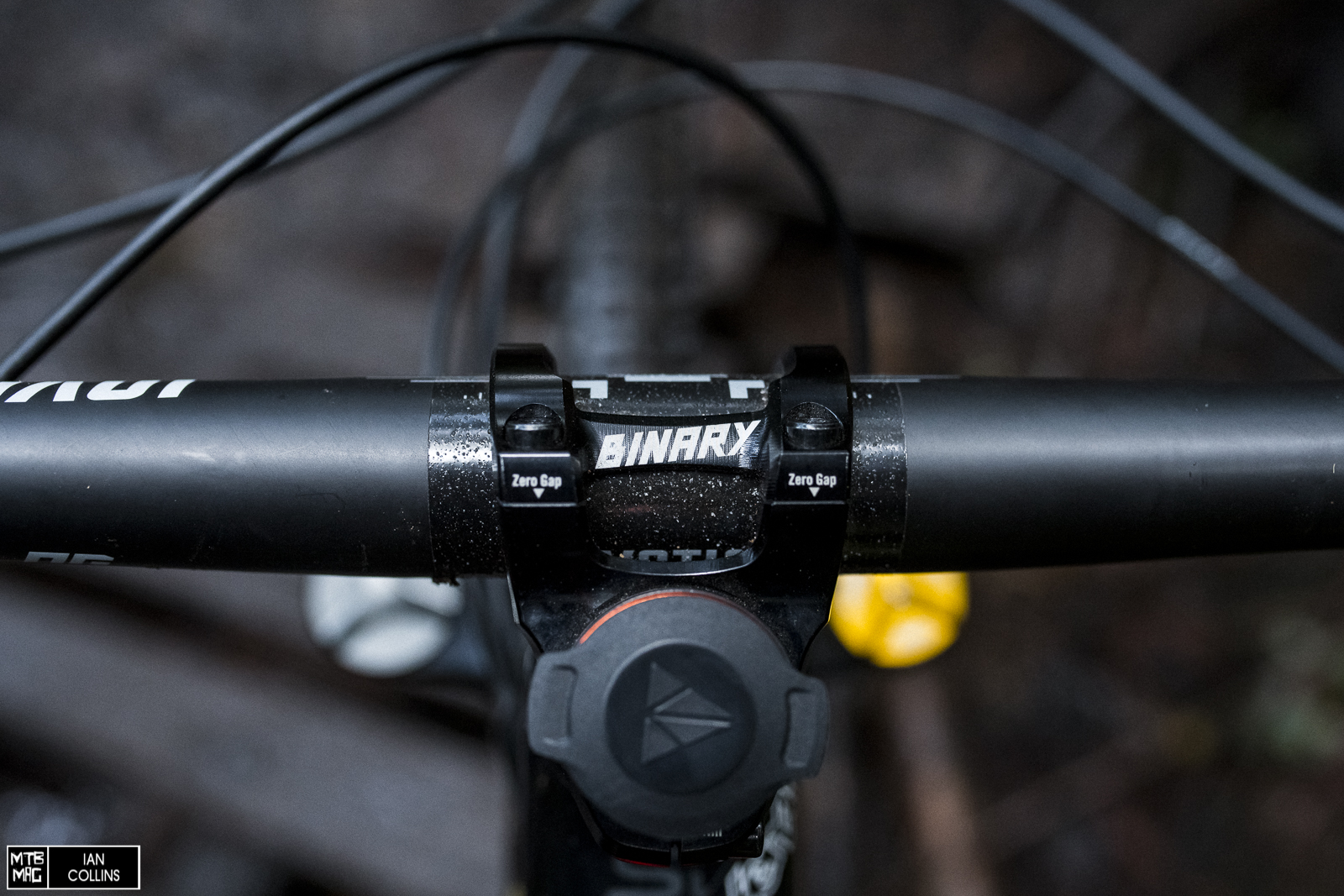
The Binary stem has a large clamp / bar interface, and a clean zero gap design for the top two bolts.
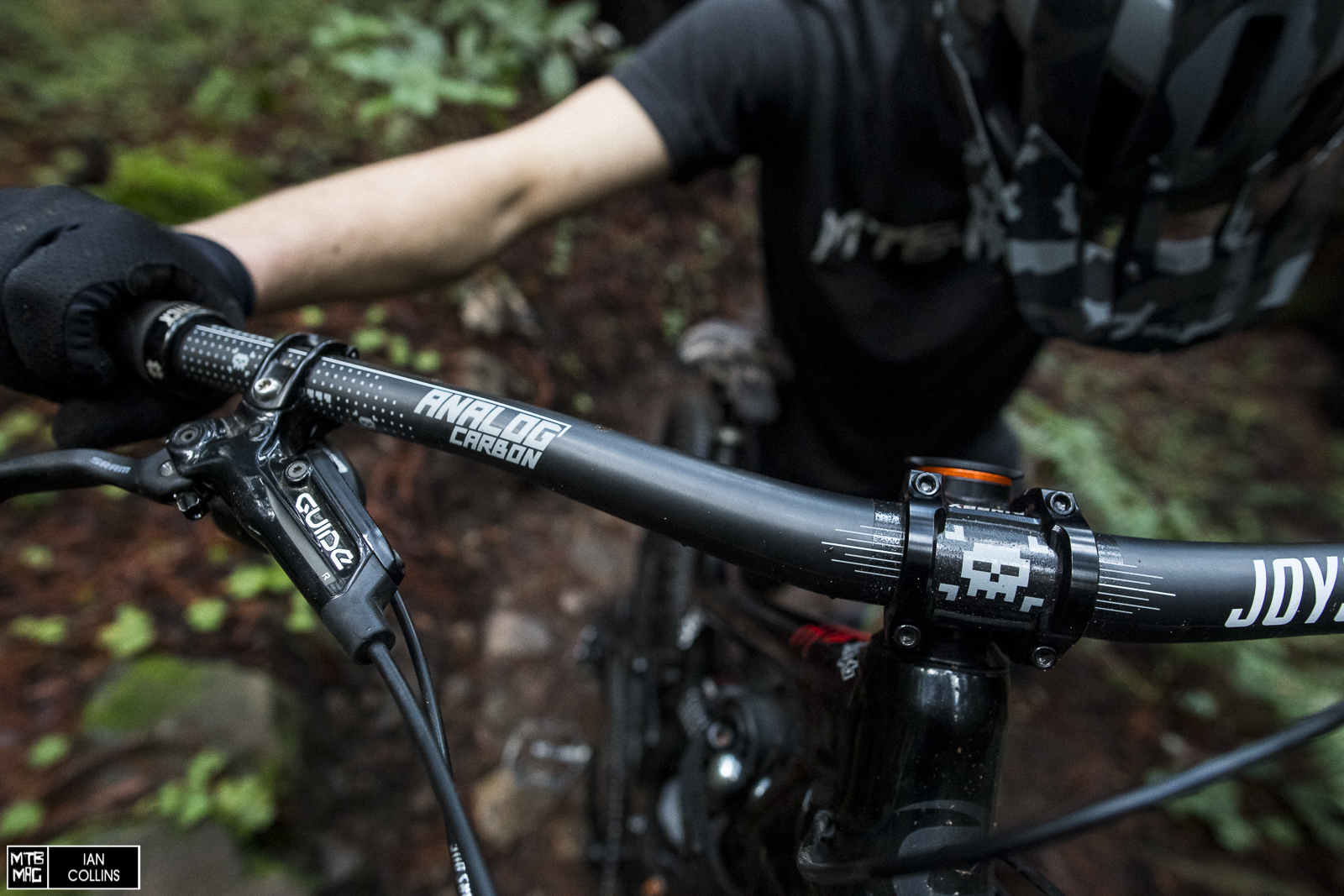
The Binary stem is fully CNC’d and uses Joystick’s ‘8-Bit Alloy’ a blend of alloys that supposedly combined, creates the strongest and best feeling stem.

Specs – Imprint Grips
- 132mm long
- 31.8 single locking clamp
- closed bar ends
- $ 25 USD £ 19.99

The Imprint grips are made from a durable yet tacky compound that we found to be soft on the hands. The single clamp is carbon friendly and easy to install.
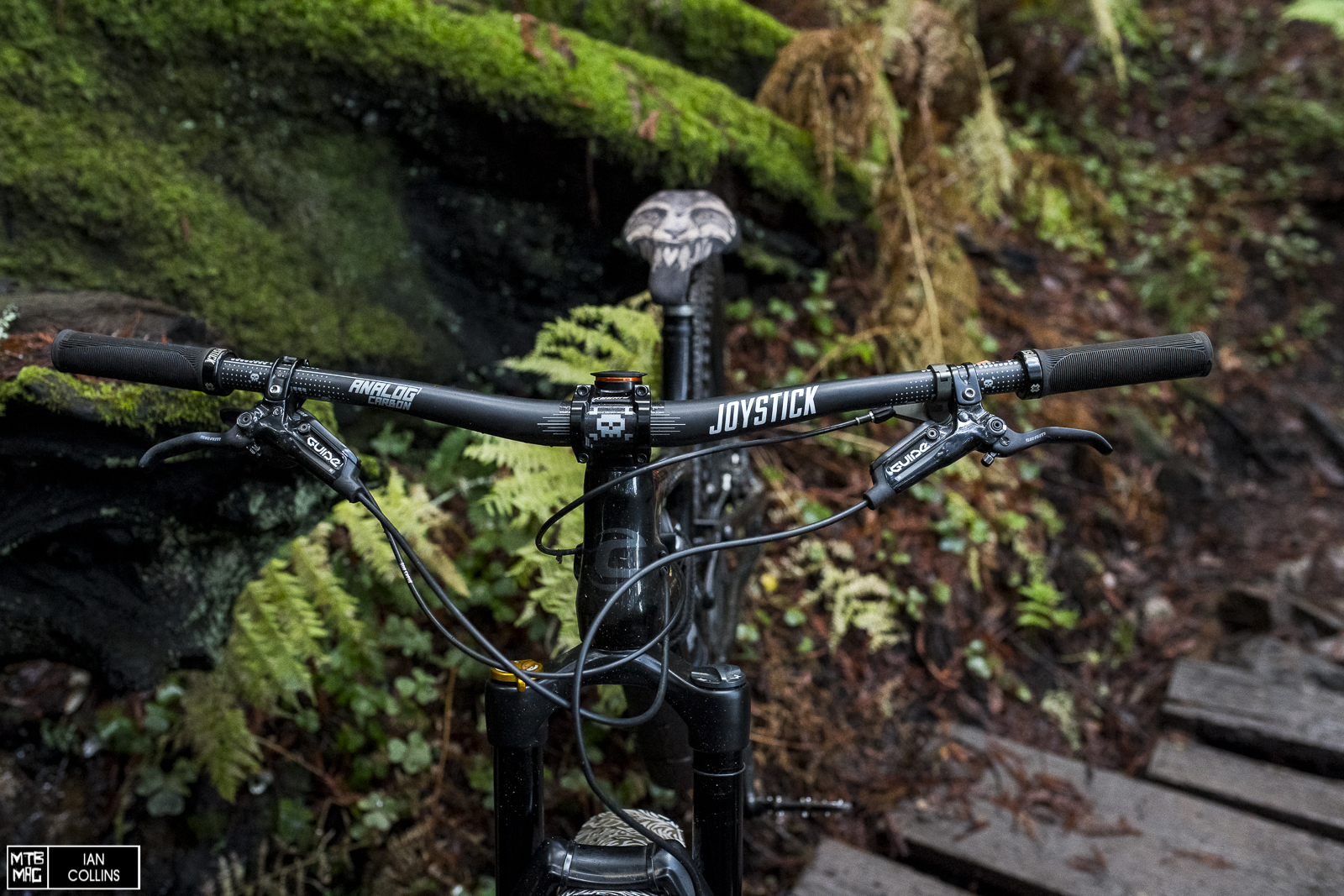
On The Trail

We were immediately impressed with the ride quality the Joystick cockpit offers. The Analog bar’s 31.8 clamp makes for a stiff, but responsive feel, and seemed to dissipate vibration greater than an alloy equivalent. We cut the Analog bar down to 790mm, and felt that was the best length for our local trails. Weight falls right in at that of the competition, and the up / backsweep numbers are fairly neutral.

The Binary stem served to be a good match for the Analog bars, setup and fitment was very easy. The short 35mm length worked well for our larger bike to keep a nimble front end. Well done CNC work, and precise bolt locations made for a worry free stem that never moved from it’s place, or loosened up. A great weight to strength ratio makes the Binary stem a top choice.

The Imprint grips, made a, well made an imprint on us! After the first few rides, we grew to really enjoy the grips. Typically we’ve got a select few favorite grips (Sensus mostly), that seem to find their way onto all of our bikes. Most grips have an ‘off the shelf’ design, and usually don’t bring anything new to the table, but the Imprint grips on the other hand, have some thought behind the ribbed, single clamp design. The rubber compound falls right in the sweet spot of not overly dense, but not soft and sponge-like, while the small ribs are the perfect depth for hanging on to.
Overall
After some time riding the Joystick cockpit as a whole, we found the parts are clearly designed by riders, and are made with an attention to quality. Sure athletes and teams need a paycheck, but the likes of Loic Bruni simply don’t put up with parts lacking a high level of performance. If you’re looking to spruce up your front end with some stealthy and attractive parts, Joystick components are certainly worth your consideration.
More at: Joystick
The post [Tested] Joystick Cockpit appeared first on MTB-MAG.COM.
